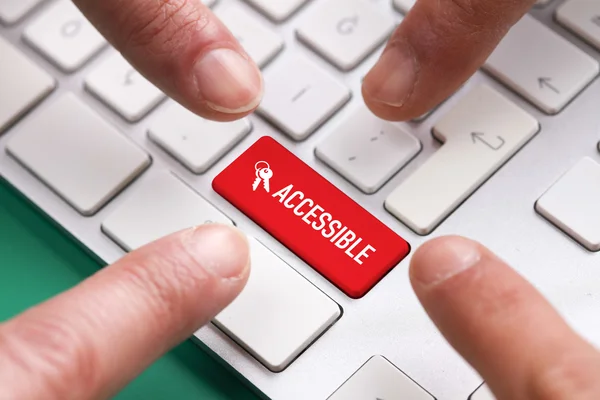A Business Guide to Digital Accessibility

As people move into the age of digital transformation, it is becoming increasingly important to ensure that businesses prioritize accessibility when starting or updating their online presence. Digital accessibility refers to making websites, applications, and any other digital content available for people with a wide range of physical abilities and sensory impairments so that they can access the information as well as use it effectively. Implementing effective access measures from the beginning will not only aid in improving customer engagement and business growth but also allow you to reach more people while providing them with an enjoyable user experience.
This blog post will dive deeper into what digital accessibility means for your business and explore best practices for optimizing a website or app toward being functional yet accessible to users with disabilities.
Understand the digital accessibility laws and regulations affecting your business
In today’s society, digital accessibility is essential for businesses to comply with federal regulations and reach a wider audience. These laws and regulations aim to make technology more accessible for individuals with disabilities. As a business owner, it is vital to understand the digital accessibility laws and regulations affecting your company. Failing to comply with these laws puts your business at risk for legal action and limits your reach to potential customers. If you own a website and do business in the US, it is 100% mandatory to have the best-in-class web accessibility tools for disabled built into a site that helps in ADA WCAG compliance. Otherwise, you might have to face lawsuits filed by web users and customers with disabilities. This is where an agency like “Accessibility Spark” can come to your rescue, by incorporating the latest ADA compliance tools into your site. By educating yourself on these regulations and making necessary changes to your digital platforms, you can create a more inclusive environment for all customers and improve your business’s reputation.
Embrace technology like digital accessibility overlays and automated testing tools
To ensure your website or app is compliant with digital accessibility standards, you should consider taking advantage of technology like digital accessibility overlays. An overlay is software designed to modify the visual display of a website or application so that it conforms to the web content accessibility guidelines (WCAG). This can help ensure that users with disabilities can access and use the website correctly. Automated testing tools can also detect any potential accessibility issues before they become a problem for users. This will help you ensure that your website or app meets digital accessibility standards and provides an enjoyable experience for all users. You can find accessibility software reviews that will outline the best solutions for your business.
Create a comprehensive digital accessibility policy
With the increasing shift towards a digital world, ensuring everyone can access information, regardless of their abilities, is more critical than ever. This is where a comprehensive digital accessibility policy comes in. By crafting a policy that outlines the necessary steps to make digital content accessible, you’re providing equal opportunities for all, complying with legal requirements, and improving the overall user experience. Such a policy should cover everything from website design and development to document accessibility and online communication methods. Ensuring accessibility is a crucial element of a more inclusive future, and creating such a policy is an essential step toward achieving that.
Train employees on digital accessibility best practices
As technology becomes increasingly prevalent in the workplace, ensuring everyone can access digital content equally is essential. That’s where digital accessibility best practices come in. By training employees on how to create content that is accessible to all, you’re not only improving the user experience for those with disabilities, but you’re also promoting a more inclusive workplace culture. Through training sessions, online resources, and hands-on practice, employees can learn how to implement accessibility features such as alt text, captions, and keyboard navigation. By investing in digital accessibility training, you’re showing your commitment to diversity and inclusion and setting your company up for success by reaching a wider audience.






